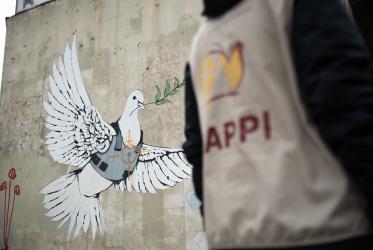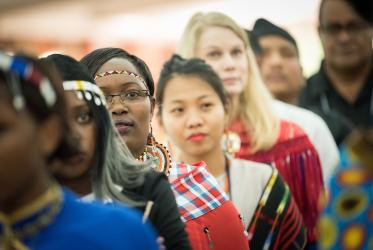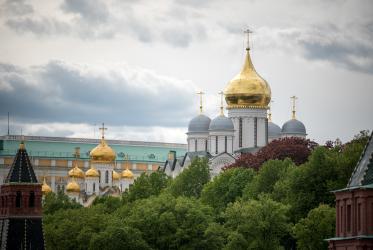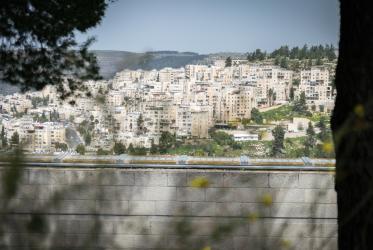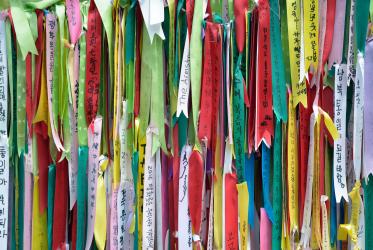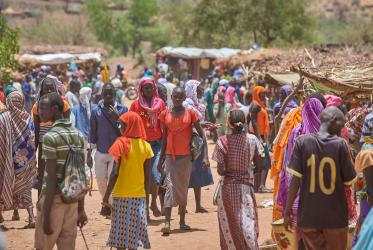As the members of the Central Committee of the World Council of Churches (WCC) return to their home communities across the world, they will consider some key questions that will enable them to continue their pilgrimages, both as a WCC governing body and individually. At the end of their week-long gathering, they took with them a graphic representation of a pilgrimage of justice and peace, with nine key questions depicted in colourful circles.
What is a pilgrimage? What are justice and peace? Why a pilgrimage of justice and peace?
The answers will depend on the realities faced in a particular country or community, reflected Marianne Brekken of the Church of Norway. “We have been challenged by the realities we are facing in different contexts,” she said. “It was a hard reality to face and hear about how we can be a fellowship when we are in crisis. To hear about the situation in Nigeria is hard for me, coming from Norway. Through sharing, we are also walking together.”
Earlier in the meeting, WCC Central Committee members from areas challenged by conflict shared their stories with colleagues, bringing a new understanding to people who don't often hear such firsthand accounts.
Moving and walking together
In the diagram of pilgrimage, five wavy lines depict a feeling of movement, signifying a pilgrimage that is ongoing, one that strives to answer open-ended questions:
How will you inspire others about the pilgrimage? Who will join you in the pilgrimage? What will be your focus on the pilgrimage?
In some ways, when a pilgrimage is one of justice and peace, there is no definite ending point, reflected the Rev. Abednego Adinugroho of Gereja Kristen Jawi Wetan (GKJW), a WCC member church in Indonesia. “Pilgrimage is a process of moving. It is a journey going forward. It is a very long walk.”
Some Central Committee members literally joined each other in a very long walk over the weekend, venturing from the Bonmont Abbey to the Ecumenical Institute at Bossey in Switzerland. For others, the “long walk” is symbolic, meaning the journey toward justice and peace will be neither short nor easy.
Central Committee members also pledged to help local churches and individuals consider their own kind of pilgrimage of justice and peace as they pored over questions that will help people focus on the concept of pilgrimage and its application in particular situations.
Where do you expect the pilgrimage to take you and your community? How will you move your pilgrimage forward? What will be the impact of your pilgrimage?
The answers depend on one's culture and context, said the Rev. Dr Henriette Hutabarat-Lebang of Gereja Toraja, another Indonesian church. “How we share our understanding from different perspectives can be enlightening and inspiring,” she said.
“On our island, for instance, pilgrimages are associated with a journey, with sending out.”
But a pilgrimage can also be an experience of spiritual transformation, added Hutabarat-Lebang. “In some cultures, simple daily encounters and the sharing of life could be a pilgrimage.”
This week, as they gathered in a multicultural and interreligious setting, the WCC Central Committee got to experience living, at least temporarily, in an extended community, Hutabarat-Lebang said. “The challenge for us is, how do we hold the unity in the midst of the pilgrimage?”
